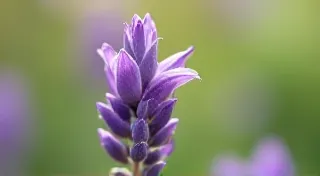The Serendipity of Scent: Decoding Aromatherapy's Role in Pet Wellness
There's a certain magic in witnessing an antique accordion breathe again. Not just the mechanical resurrection of bellows and keys, but the return of a voice, a memory captured within wood and metal. I remember the first time I truly understood that feeling. My grandfather, a quiet man of meticulous hands, was restoring an old Hohner Stradella, its once vibrant red now faded to a dusty rose. He's explain how each key represented a careful calculation, a precise pressure needed to coax a melody from the instrument. “It’s about listening,” he’s said, “hearing what the wood is telling you.” It’s a lesson that resonates beyond the world of musical instruments, a lesson I find profoundly relevant to the burgeoning field of pet wellness, specifically the beautiful synergy of gentle herbal teas and aromatherapy.
For centuries, humans have instinctively used scents to heal and comfort – lavender for sleep, rosemary for memory, peppermint for digestion. This isn’t new; it’s an ancient wisdom embedded in our DNA. And if we consider the incredible sensitivity of an animal's sense of smell – often far surpassing our own – it becomes clear that aromatherapy isn’t just a pleasant addition to pet care; it’s a potentially powerful tool, especially when paired with the gentle nurturing of thoughtfully crafted herbal teas.

The Foundation: Herbal Tea for Pet Wellness
Before we delve into the fragrant world of aromatherapy, let’s reinforce the bedrock of our approach: safe and beneficial herbal teas for our beloved companions. We, at [Your Website Name], are adamant about prioritizing safety. The same herbs that offer soothing benefits to humans can be toxic to pets. Chamomile for relaxation? Wonderful, but only in carefully measured doses and with the right variety. Lavender for calmness? Yes, but not all lavender varieties are safe for ingestion. The key lies in education and precision. Understanding the nuances of herbal combinations, and how different flavors interact, is a craft that takes time and dedication - a true art. For those interested in learning more about balancing flavors and harnessing the healing power of herbs, check out our article, A Pet's Palette: Harmonizing Flavors & Healing Properties.
The beauty of herbal teas isn't just in their potential to address specific ailments – from calming anxiety to supporting digestion – but also in their inherent gentleness. Unlike some conventional medications, herbal remedies often work more subtly, encouraging the body’s innate healing mechanisms. For dogs, gentle chamomile, oat straw, and dandelion leaf can contribute to overall well-being. For cats, the possibilities are equally exciting, though even more caution is warranted. Consider catnip (in moderation, of course!), valerian (also with careful dosage), and even a tiny amount of lemon balm for a calming effect. Rabbits, with their sensitive digestive systems, benefit from ingredients like fennel fronds, calendula, and plantain – all readily available and often overlooked weeds! When dealing with young pets and concerns like colic, understanding the right approach is crucial, which you can explore further in our article on The Gentle Bloom: Soothing Colic in Young Pets Through Herbal Support.
Aromatherapy: The Amplification of Healing
Now, let’s layer the magic of aromatherapy onto this foundation. Aromatherapy isn’t just about making a room smell nice; it’s about utilizing the therapeutic properties of essential oils to affect mood, alleviate pain, and even support immune function. Think of it as the gentle wind that carries the scent of a blooming meadow, subtly influencing everything it touches.
However, and this is a crucial point, aromatherapy for pets demands even greater caution than herbal teas. Essential oils are incredibly potent and can be easily overused. What’s therapeutic for a human can be toxic to a dog, cat, or rabbit. Certain oils, like tea tree oil and pennyroyal, are absolute no-gos. Dilution is paramount. The rule of thumb is far lower than what’s typically used for human aromatherapy – we’re talking about incredibly minuscule amounts, often diffused rather than applied topically.
Consider the benefits. A diffuser filled with a very diluted blend of frankincense and chamomile can create a calming atmosphere for an anxious dog. A tiny amount of mandarin oil can help soothe a cat suffering from stress-related digestive issues. For rabbits, a whiff of dill or coriander (through a diffuser, again in very low concentration) can stimulate appetite and ease digestive discomfort. The key is observing your pet's reaction. Do they approach the scent willingly? Do they seem relaxed? Or do they exhibit signs of discomfort, like sneezing or rubbing their face?

The Synergistic Dance: Tea and Scent Intertwined
The real power lies in the synergistic blend of these two therapies. Imagine a dog struggling with separation anxiety. A gentle, calming herbal tea, formulated with chamomile and oat straw, can help soothe their digestive system and relax their muscles. Simultaneously, a subtle diffusion of lavender (at a very low concentration) can create a comforting atmosphere, promoting relaxation and reducing anxiety. This isn’t about masking symptoms; it’s about supporting the body’s natural ability to heal and adapt.
For a cat dealing with urinary tract issues, a gentle, urinary-supportive tea, combined with the calming effects of a diluted mandarin oil diffusion, can provide a holistic approach to healing. And for a rabbit experiencing a loss of appetite, a carefully chosen tea blend, complemented by a whiff of dill or coriander, can stimulate their senses and encourage them to eat.
The Craftsmanship of Care: A Return to Ancient Wisdom
This isn’t just about following recipes; it’s about understanding the underlying principles. Just as a skilled accordion repairer listens to the wood and metal to understand its needs, we must listen to our pets. Every animal is an individual, with unique sensitivities and needs. There’s no one-size-fits-all approach. The process of sustainably gathering herbs also requires a deep understanding of nature and its rhythms, and we encourage you to learn more about Whispers from the Meadow: Harvesting Wild Herbs Responsibly.
My grandfather, with his quiet wisdom and meticulous hands, instilled in me a deep respect for craftsmanship – not just in the creation of beautiful objects, but in the art of care. He believed that true healing came from a place of deep listening and a genuine desire to help. That principle, that dedication to detail and understanding, is the heart of our approach to pet wellness here at [Your Website Name]. The beauty lies not just in the scent of the herbs and oils, but in the bond created through attentive care and a profound connection with our animal companions. It’s a legacy worth preserving, a return to ancient wisdom, and a testament to the enduring power of scent and the gentle art of healing.

The combination of aroma and herbal support requires a deep understanding of both the plant’s chemical compounds and the animal's unique physiology. Different breeds may react differently to the same blend, necessitating a nuanced approach to aromatherapy and herbalism. Tailoring treatments for specific breeds, considering their individual sensitivities and predispositions, is a key aspect of personalized pet wellness, and you can delve deeper into this aspect in our article, The Alchemist's Palette Revisited: Blending for Specific Breeds. Furthermore, responsible sourcing of ingredients goes beyond simply choosing organic options; it encompasses an ethical commitment to environmental sustainability and fair labor practices. This commitment involves understanding the lifecycle of plants, from seed to harvest, and minimizing the impact on ecosystems.
Beyond the immediate therapeutic benefits, the act of caring for a pet with herbal teas and aromatherapy can strengthen the bond between owner and companion. The gentle ritual of preparing a cup of tea, the mindful diffusion of essential oils – these acts of care become moments of connection, fostering a deeper understanding and appreciation for the unique needs of each animal. This holistic approach to pet wellness, encompassing not only physical health but also emotional and spiritual well-being, reflects a return to ancient traditions that recognized the interconnectedness of all living things.
The artistry of combining these therapies is an ongoing journey of learning and refinement, constantly adapting to the evolving understanding of both herbalism and aromatherapy. It’s a testament to the power of observation, the importance of intuition, and the enduring magic of nature’s healing gifts.





